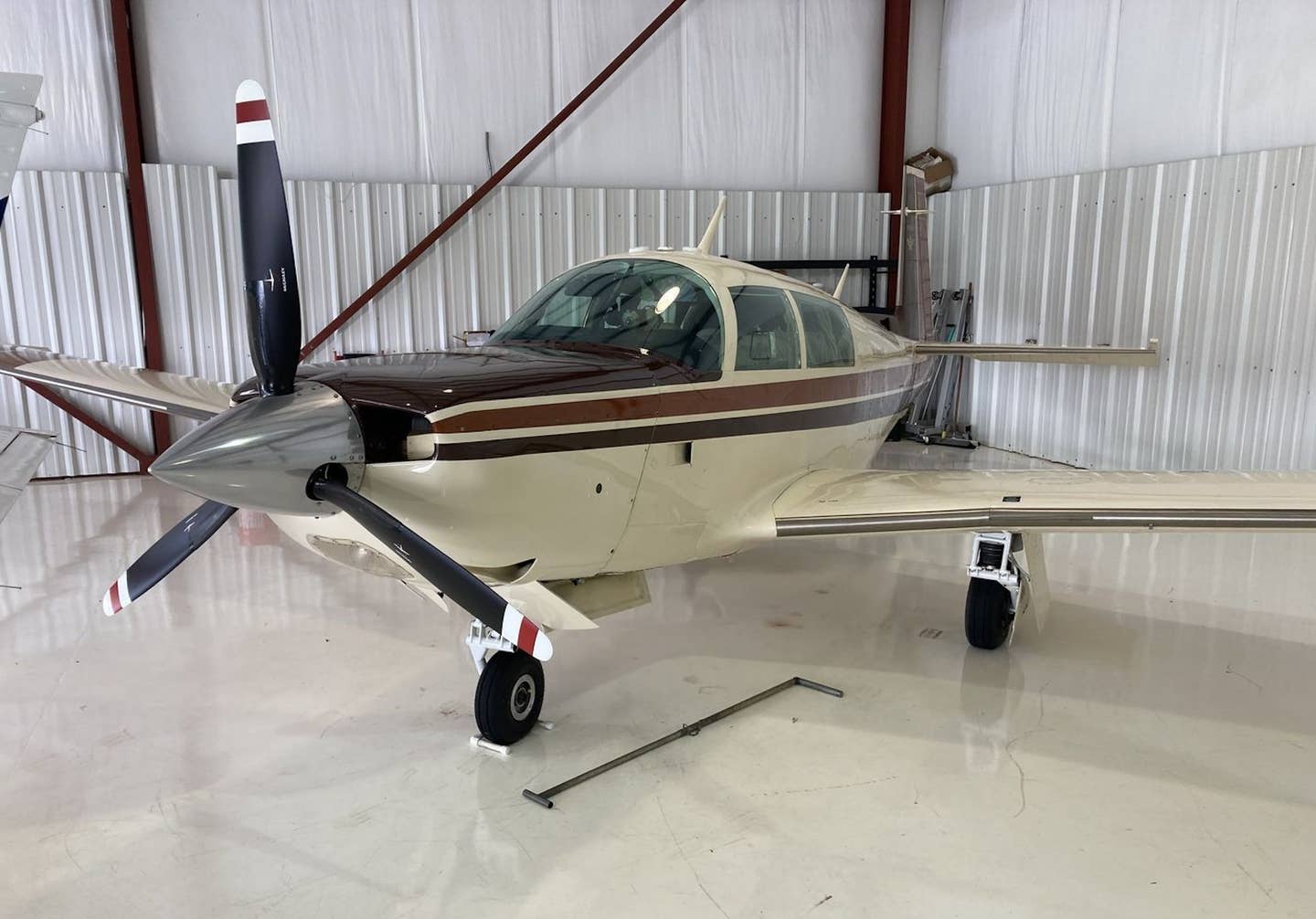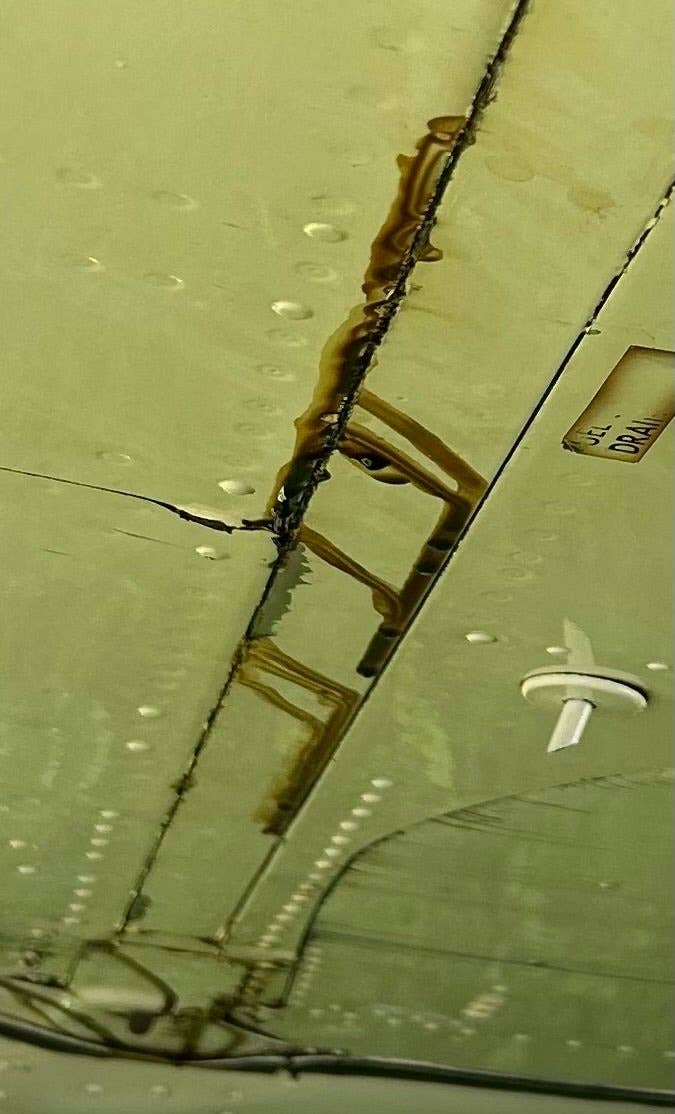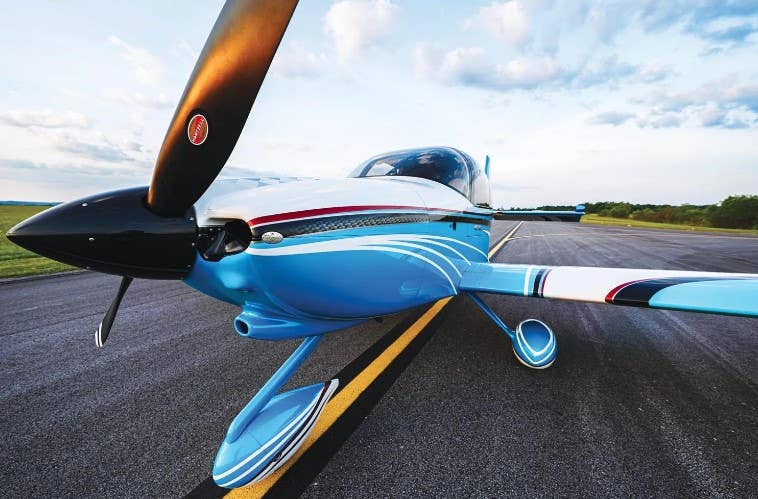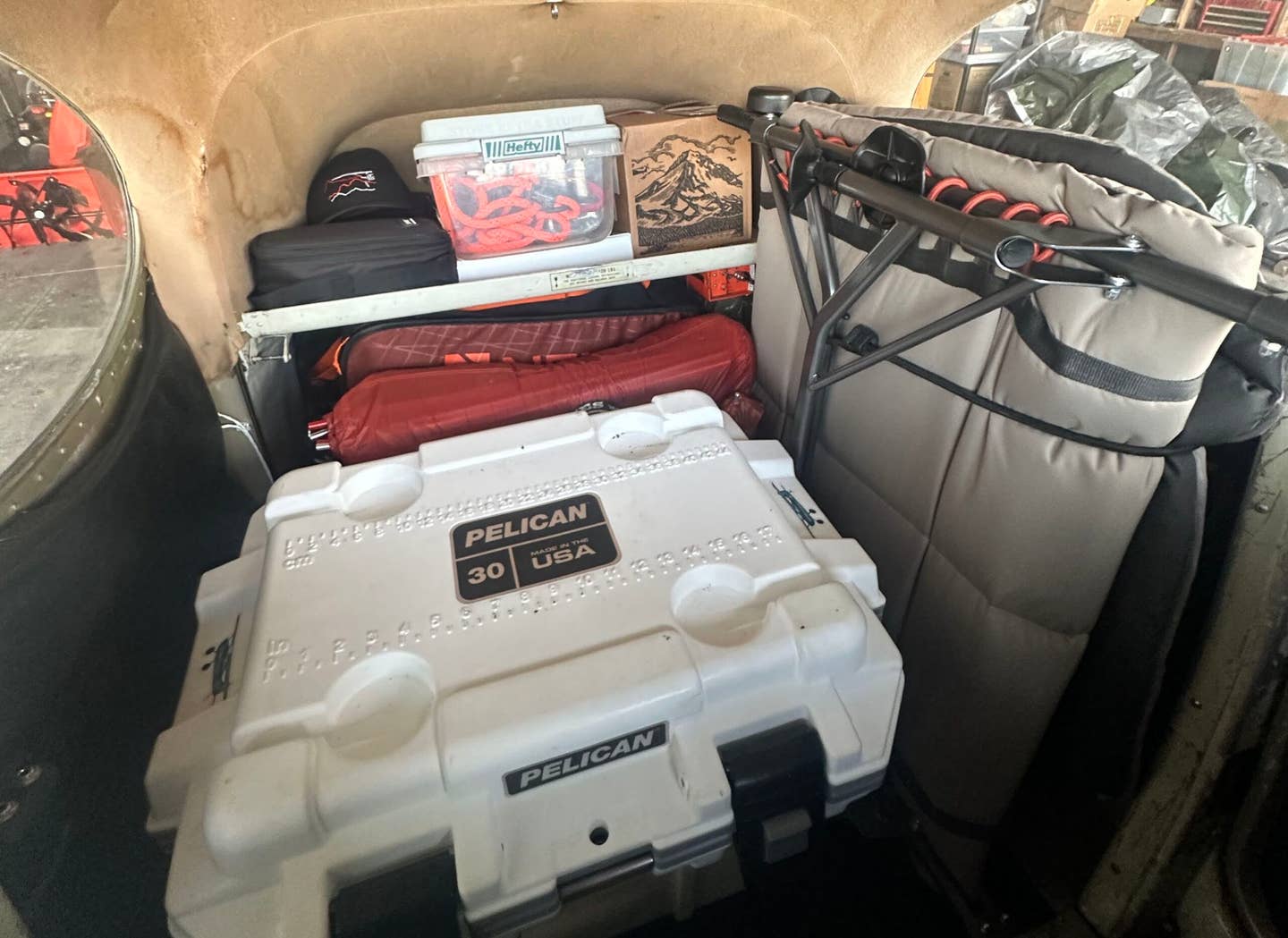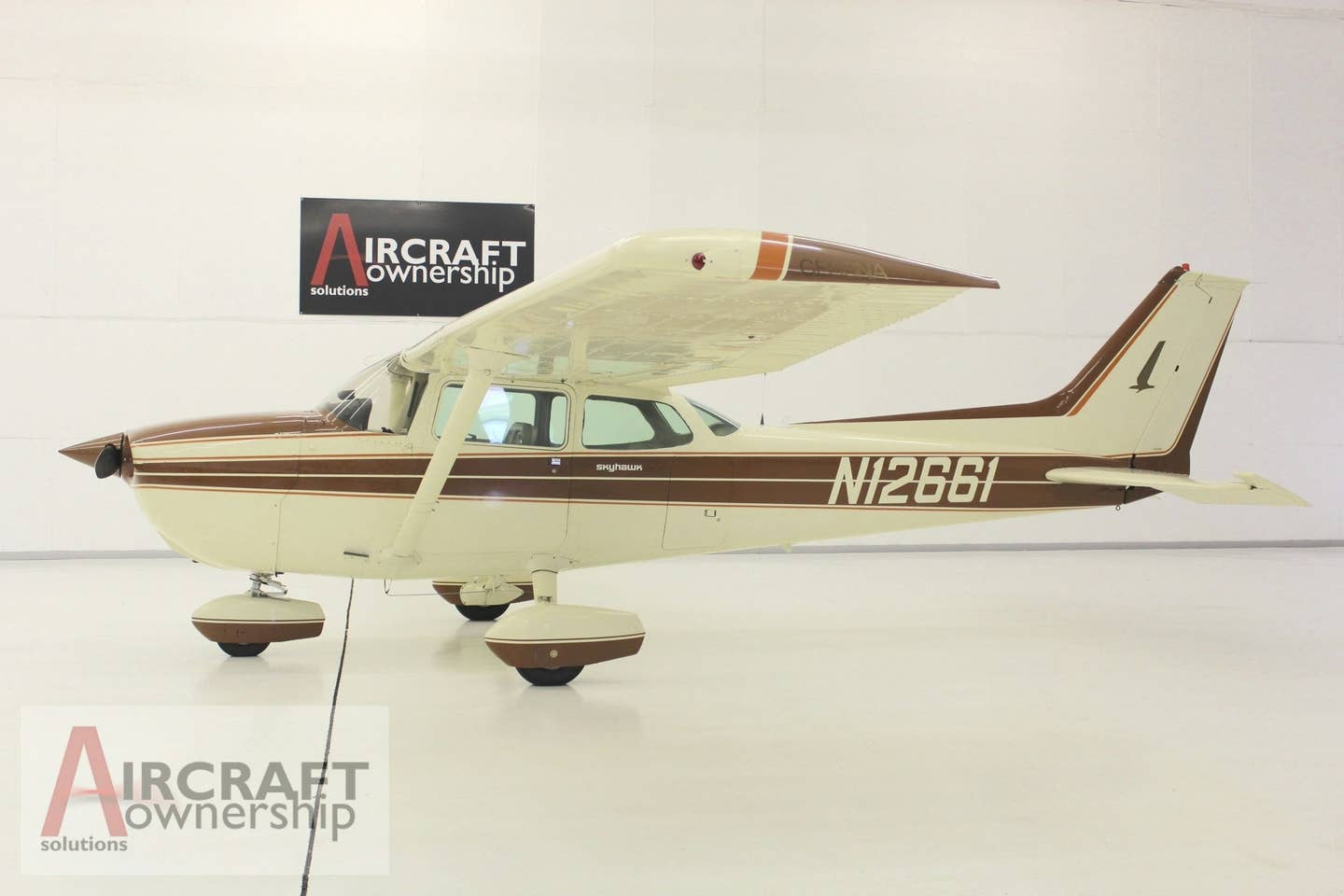We Fly: Cirrus Vision Jet G2+
Meet a single-engine, very light jet equipped with a highly detailed MFD and Perspective Touch platform.
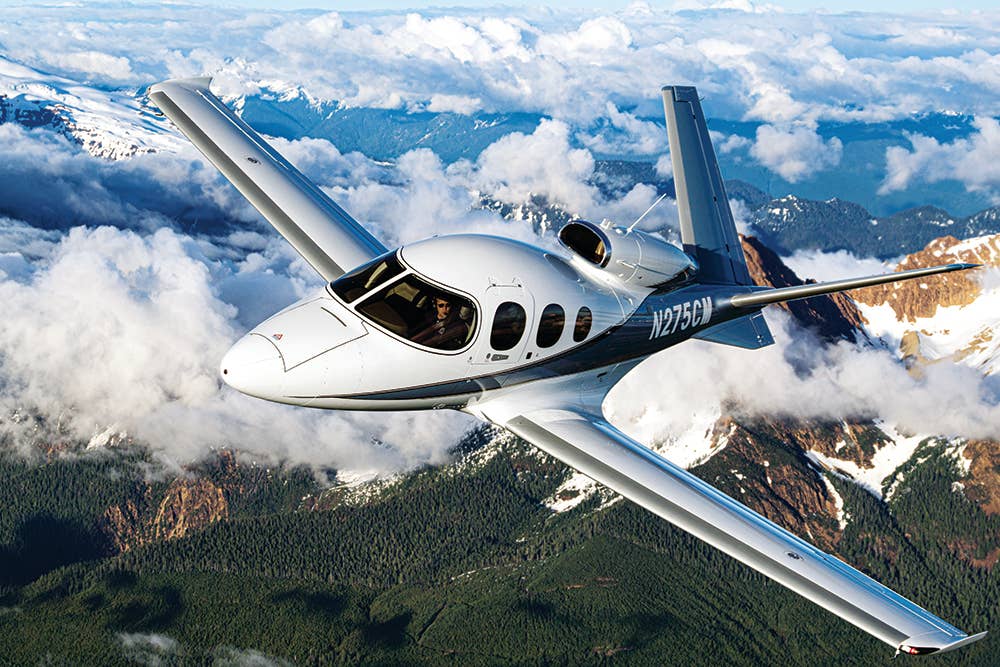
The new features on the G2+, which centered around an update to the Williams International FJ33-5A engine. Credit: Cirrus Aircraft
What will it feel like if you ride the chute down? Skydivers know one answer—based on the parachute they strap themselves into. The pilots who have put various aircraft through their initial paces in the experimental stage may know another—the deployment of a flight-test airframe chute to recover during spin testing gone south, or an airframe mishap. Somewhere in between sits a pilot in the future who has pulled on the Cirrus Airframe Parachute System handle in a Cirrus SF50. The company wants everyone who will sit left seat in its single-engine Vision Jet to know how that feels so pilots will be able to do it if they need to—but not without conscientious determination.
Many pilots, myself among them, will feel uneasy—or worse—at surrendering control of the airplane to a piece of fabric suspending on thick cables somewhere above the airframe, as you swing like a pendulum below. The sense of this stays with you, proved when I flew in the company’s Vision Jet G1 simulator this past fall at the Vision Center in Knoxville, Tennessee. And it keeps most of us, I believe, from pulling that handle indiscriminately.
But I thought of this option when we encountered a long climb through unanticipated ice in early July during a test flight of the latest Vision Jet iteration, the G2+, from Chattanooga (KCHA), Tennessee, to Hagerstown (KHGR), Maryland. Not that we even came close to pulling out that particular checklist, but the fact that this is one jet with that final option available entered into my thought process. There’s an underlying comfort to that but also a different kind of responsibility.
Cirrus Vision Jet G2+ at a Glance
And it’s one that now extends to the addition of Safe Return—the Cirrus name for Garmin’s 2021 Flying Innovation Award-winning Autoland system—the G2 platform that was designed around the capability to land the airplane without pilot intervention.
Test Flights
The cold rain on a July morning in Tennessee came as a surprise—and frankly did not bode well for a demo pilot looking to show off hot-and-high-altitude performance. Fortunately, it wasn’t my first time flying with Cirrus Aircraft’s Matt Bergwall in the SF50. We’d had a couple of hours in the straight G2 version a few months earlier, plus a solid session in the sim. More on that—and its value both in initial type rating and recurrent training—a bit later.
Before we met up for the flight, Bergwall and I briefed the new features on the G2+, which centered around an update to the Williams International FJ33-5A engine that expanded temperature limits, allowing for the use of more of the available thrust at high temperatures and field elevations. This would result in a projected boost of 20 percent at the highest airports in the system as well as a respectable 4 percent reduction in takeoff and landing distances at sea level. We would also have a chance to see the jet’s latest advancement in connectivity: the addition of in-flight Wi-Fi from Gogo.
I should have known—or maybe Bergwall should have been more skeptical of—the juju I would bring to the flight when he picked me up at Wilson Air Center on the west side of the field at Chattanooga. So far, we are two for two in gathering a significant collection of mixed ice on our duo of days flying the jet together. Fair warning for next time, Matt! But once more, it was instructive on many levels.
On our first flight in the previous G2 model, N858AG, back in December 2020, the ice was not only anticipated—yeah, December—it was also wholly expected, given the reports of light rime on the descent from Delta and Envoy flights coming into Knoxville that morning. We had a lot of room under the overcast and only a thin layer to contend with, so what we picked up in the transit between 2,500 and 10,000 feet—though not anything to brush off—was a nonevent, save for the fact it gave me a good sense of how the deice and anti-ice systems work on the SF50. We turned on the boots as we entered the clouds, along with the engine anti-ice we’d engaged after takeoff and the alcohol-based ice protection system for the windshield.
Flash-forward to July this year. We’d had a letup in the morning sprinkles when we went out on the ramp to N275CM that gave some indication of the moisture level to be found within the clouds above. Once preflighted, loaded and on our way, we took another look at the weather to expect for the 454 nm journey ahead. There was some convective activity buried in the layers centered about 65 nm south of the Volunteer VOR (VXV) near Knoxville, but there were widely spaced cells and no pireps of note. We planned for a climb to the airplane’s max cruising altitude of 31,000 feet to take advantage of whatever speed advantage we could find up there.
Not expecting to see much in terms of takeoff-performance change at KCHA, we launched, carrying nearly full fuel (270 gallons), which was enough plus more than ample reserves for the trip, as well as our 650 pounds of people and baggage; the flight planned 131 gallons plus 52 gallons of reserve fuel equaled 183 gallons of the 296-gallon usable capacity, or 1,231 pounds.
This kind of trip fits a sweet spot for the jet. With two people and bags, the Vision Jet carries full fuel and easily makes 1,000-plus-nm trips. Adding that third or fourth person (depending on their size) knocks the range down a bit from the maximum of 1,275 nm, to roughly 800 nm plus IFR reserves, but operationally, owners rarely push up to that limit. Bergwall noted that on 90 percent of flights, four or fewer people are on board.
We passed the freezing level as we climbed through 16,000 feet. Looking out through the fuzzy air at the wing, I waited for the inevitable. Yep, there it was. We had the engine anti-ice on already—not just a good idea in visible moisture but also the “law”—but we waited to turn on the wing and stabilator boots (on a single switch in the SF50 because you don’t want one set without the other) until the buildup began in earnest. There’s a small performance penalty from using the boots, because they run off of bleed air from the FJ33—but you can leave them on indefinitely, an advantage over the TKS-based ice protection on the SR series.
And it did, with even more thinly veiled aggression than the ice of our December 2020 flight. We sat quietly as the measured climb continued, but even the small change in weight brought on by the buildup ate away at our rate. I know I was looking hopefully upward, seeking the sun. When the light began dancing again on the glareshield 5,000 feet and 8 minutes later, I admit to letting out a little sigh. In this respect, I sense that my experience reflects that of many pilots transitioning to the SF50 from a high-performance single or twin and getting to know the flight levels above 24,000 feet for the first time—or extending their time within them. With that comes more exposure to high-altitude weather as well as icing conditions that aren’t necessarily forecast.
Brandon Ray, instructor and owner of High Performance Aviation, agrees that this is an area of focus for transitioning pilots. “Even with larger jets, most pilots will tell you they don’t like to stick around in icing conditions for long,” says Ray. “It is important for new Vision Jet pilots to get exposed to some varying icing conditions so they can evaluate an appropriate decision to fly through it, change altitude, or change direction. Just like the piston aircraft, having FIKI does not make a plane invincible in all icing conditions. Having a healthy respect for icing will pay dividends in safety.”
In the full sun at FL 240 and minus 12 degrees Celsius, 17 nm south of Volunteer, the trails of melting ice coursed across the windshield and down each side of the fuselage. We’d held off on deploying the windscreen’s in-plane-switching goo knowing that sunshine was imminent and a hot, solar-satisfying descent and landing lie ahead. Otherwise, we could have engaged it in low or high mode to rid ourselves of the frozen menace and gain forward viz again.
Staying Connected
Now that we cruised along at FL 310, we had two goals: get to a true airspeed above 300 knots and check out the connectivity package touted as a primary delighter in the newest G2 model.
Bergwall was getting that fidgety demo-pilot demeanor as we waited to shed the ice that clearly held us back from the first goal. I tried to soothe his nerves by suggesting we leverage the Cirrus Perspective Touch platform to take advantage of such tried-and-true SiriusXM music as one could find on the Love channel or Bluegrass Junction. He landed upon Road Trip Radio, which felt appropriate for our journey north.
Smooth and in the clear, Bergwall walked me through the systems pages on the right-side multifunction display, which allow the pilot to keeps tabs on all the critical parameters during the flight, down to a pilot-satisfying level of detail. The deice/anti-ice system map was of particular interest, and we could see at a glance the status of the left and right pitot-tubes and angle-of-attack indicator heat, IPS fluid level, engine inlet temperature and pressure, engine TT2-probe heat, and even the temperature of the air in the boots (205 degrees C, by the way, when we checked it).
The environmental systems page showed our oxygen-fill level and valve status, the cabin temperature and pressure, and the bleed-air temperature and pressure. Little green fan icons indicated all was apparently fine with the cabin-air circulation—and a check-in with our back-seat passenger prompted a thumbs-up from his roomy perch from which to take photos of all the action. An electrical-system page mapped out the main and essential buses (fore and aft) and the emergency bus, as well as the state of the two generators and batteries in the scheme. A fuel-system page similarly laid out our fuel on board in a simple diagram.
The Gogo L3 Wi-Fi transceiver and antenna installed into the G2+ we flew—and included in the newest model’s connectivity-upgrade package—worked as projected during the flight. The L3 stands in this case for “Level 3,” the 3G network that the system uses. Gogo offers an L5 system as well that will use 5G, but that’s only available in a limited number of platforms as of press time.
The system builds upon the Garmin Flight Stream 510—the wireless connection that allows the pilot to upload a flight plan from an iPhone or iPad to the Perspective Touch—that has been incorporated into the jet since its earlier days. It also enabled folks on board to send text messages and place calls through an Iridium satcom transceiver. With the Avance L3 we saw in operation as low as 3,000 feet agl, the need for that satcom goes away unless you’re beyond the reaches of a cellular network.
With that magic on full display, I could sense that Bergwall was hoping for a little bit more fairy dust to sprinkle down upon us from the speed gods—and for a few special minutes, about 225 nm out from KHGR, we topped 300 ktas. Granted, the SF50 shows its top speed at FL 280, according to the book, where it can hit 311 ktas under certain conditions; we were at an outside air temperature of minus 32 C, showing 31 percent thrust. We did our best.
In between a few twists of the heading bug to sashay past a couple of towering CUs[AC2] on the descent, we played around with the enhanced-vision-system display, which would show the power of its infrared camera at night or in low visibility. We also cycled through the myriad ways you can use the two 14-inch displays to sort the information you want at hand. Split screens and reversionary modes make it a pilot’s choice, all driven by the three touchscreen controllers horizontally situated in the console below.
High Density
We got our opportunity to look at the improved performance in hot, humid conditions upon landing at Hagerstown, and again when we took off for a short repositioning flight into Manassas (KHEF), Virginia. The flight-management system within the Perspective made the projections for us. With a total air temperature of 35 degrees C (95 degrees F) on the ramp, the effective field elevation, or density altitude, showed as 3,064 feet msl. Not mountainous heights, but not a cool day at sea level, either.
With an aircraft weight of 4,972 pounds, we were looking at a takeoff ground roll of 2,661 feet and a distance over the 50-foot obstacle of 3,949 feet. We could expect an initial rate of climb of 1,162 fpm. Taking into account average pilot skill at the controls, we used well under half of the total runway length (7,000 feet) at Hagerstown.
Even without the autothrottle found on the G2 and G2+, the SF50’s Williams FJ33-5A could hardly be easier to manage; in fact, this is one immediate benefit that pilots moving up the food chain from futzy-feely high-performance turbocharged piston engines will notice.
“The Vision Jet is by far my favorite aircraft to fly,” says Max Trescott, longtime San Jose, California-based instructor typed in the SF50. “Although I do a lot of flying in the Vision Jet, I’ve only done one SOE [supervised operating experience (a session of 25 hours, typically, with an experienced pilot sitting in the right seat)], as Cirrus likes to do most of those with their own instructors. I do a lot of work with low-time Vision Jet pilots, either before they go to do their type training or after they’ve finished their SOE.”
Trescott notes only one area of concern with powerplant management: “The one thing new SF50 pilots occasionally forget is to reduce the power after takeoff; the FJ33-5A has a maximum power limitation of 5 minutes,” he says. “That power reduction happens automatically when using the autothrottle in the G2 and G2+, but pilots have to remember to do it manually in the G1.”
Ray notes that the autothrottle warrants careful attention by transitioning pilots. “An autopilot or autothrottle can make a flight safer or, in the case of an unfamiliar or untrained pilot, more risky. Because of the nuances of the automation, pilots of G2 aircraft will want to get differences training in the aircraft after their type rating to learn the specifics of flying the SF50 with the autothrottle.”
The Chute Pull: Simulated
Trescott confirmed a suspicion I had about descent planning, the area in which pilots transitioning from the SR22 or similar high-performance singles would encounter the most need for a change in thinking. I experienced this on my own flights: When it came time to initiate the descent from FL 310, and we needed to make a crossing restriction applied by Washington Center that seemed fairly modest, I initially selected a descent of 800 fpm or so. That was not going to cut it.
“In my experience,” Trescott says, “the most consistent area of focus after getting the type rating is getting pilots used to managing their descents from the flight levels. If ATC leaves them up high for too long, it usually takes newly minted jet pilots a while to realize that, and they end up high and fast. Many of them will set the autopilot to descend at 500 fpm, which works well in piston aircraft but is often insufficient when descending from the flight levels. Using arrival procedures properly is also a common challenge, as many IFR pilots haven’t previously used arrival procedures much, unless they happened to be based at a very large airport.”
Ray concurred. “Most jet pilots plan for a descent path that is closer to a 3-degree angle,” he says. “Because of the pressurization system, pilots no longer have to worry as much about maintaining a descent rate around 500 fpm to be comfortable for passengers. The aircraft can descend at a much faster rate, while the cabin rate of descent stays in a comfortable range for the ‘perceived’ rate of descent for the passengers. Because the SF50 is not as fast as traditional two-engine business jets, it can actually hit some steeper descent gradients without much effort. Why would one want to do this? For jet pilots, fuel efficiency is all about flying high as long as possible. The performance and flight characteristics of the SF50 make it possible to fly higher longer, and then descend at steeper angles to maximize efficiency or to meet crossing restrictions. It is useful to practice a variety of scenarios to get comfortable how to manage the mental descent planning as well as the VNAV programming and automation.”
Another way down is the CAPS—one that pilots hope they never have to use—and a procedure that I’m now fortunate to have practiced in the sim, if you could call a mostly psychological exercise “practice.” Once you run the checklist and pull firmly down on the handle, the airplane pitches up to bleed off speed if needed. Then, the chute deployment sends you into a further pitch-up attitude right after the straps elongate, then a pitch-down attitude before the airframe settles into a fairly level descent. It’s hard to tell that you’re descending at a rate from 900 to 1,500 fpm until you get close to the ground.
With the G2 version, the sim now offers the ability to execute the Safe Return function—a third way down safely, if you will. Safe Return gives over to anyone on board the jet the ability to manage their own descent and landing, using the brains behind the Perspective plus the mechanical means to descend, land and brake the jet to a stop to do it for someone who cannot do it themselves for whatever reason.
Cirrus waited in anticipation of the first pull of the CAPS handle in real life, which happened back in 2002, four years after the first chute was installed on a production SR20. And I’m sure everyone at the company hopes that Safe Return never needs to be used. But that option—considering that the pilot meets their responsibility to train and brief properly for its use—puts the real “plus” in the G2.
Training Takeaways
More than 400 type-rated pilots, utilizing a fleet of more than 250 SF50s, have gone through the nine-day course at the Cirrus Vision Center at the Knoxville airport. And most have had the opportunity to train for abnormalities and emergencies in the center’s full-motion, Level D flight simulator. The follow-on to training includes the 25 hours of SOE, and then the pilot enters a cycle of recurrent training and ongoing education—hopefully for life.
“I spend a lot of time reviewing the aircraft systems prior to going back for recurrent training,” says Trescott, referring to how he prepares for the recurrent training he pursues each year to meet both insurance and personal standards. “The SF50 has far more systems than a piston aircraft, and they’re more complex, so there’s a lot to remember. I have extensive notes I typed up from my original type rating, which helps with the review. There are also a number of emergency-checklist memory items, and I practice reviewing those throughout the year.”
Ray has a few pointers as well: “When I go back for recurrent on any plane, the things I like to review specifically are limitations, memory items, emergency checklists, systems, and flight profiles (target speeds for procedures). I usually like to “chair fly” in front of a panel poster to visualize the procedures, especially the ones that require multiple steps by memory.
Spec Sheet
| Price (as tested): | about $2.98 million | Max Takeoff Weight: | 6,000 lb. |
| Powerplant: | Pratt & Williams international FJ33-5A (1,846 lb. of thrust) | Max Landing Weight: | 6,000 lb. |
| Seats: | 7 (5 adults + 2 children) | Length: | 30.7 feet |
| Height: | 10.9 feet | Wingspan: | 38.7 feet |
| Cabin Width | 5.1 feet | Cabin Height: | 4.1 feet |
| Wing Area: | 195.7 sq. ft. | Wing Loading: | 30.7 lb./sq. ft. |
| Power Loading: | 3.25 lb./thrust lb. | Max Ramp Weight: | 6,040 lb. |
| Max Takeoff Weight: | 6,000 lb. | Basic Empty Weight: | 3,550 lb. |
| Max Payload: | 1,350 lb. | Max Useable Fuel: | 2,001 lb (296 gal.) |
| Max Operating Altitude: | 31,000 feet | Max Rate of Climb: | 1,609 fpm |
| Max Speed: | 311 ktas @ 28,000 ft. | High Speed Cruise: | 305 ktas @ 31,000 ft. |
| Max Range: | 1,275 nm | Stall Speed, Flaps Up: | 86 kcas |
| Stall Speed, Full Flaps: | 67 kcas | Takeoff over 50-ft obs.: | 3,192 ft. |
| Landing over 50-ft obs.: | 3,011 ft. | Glide Ratio: | 14.7:1 |
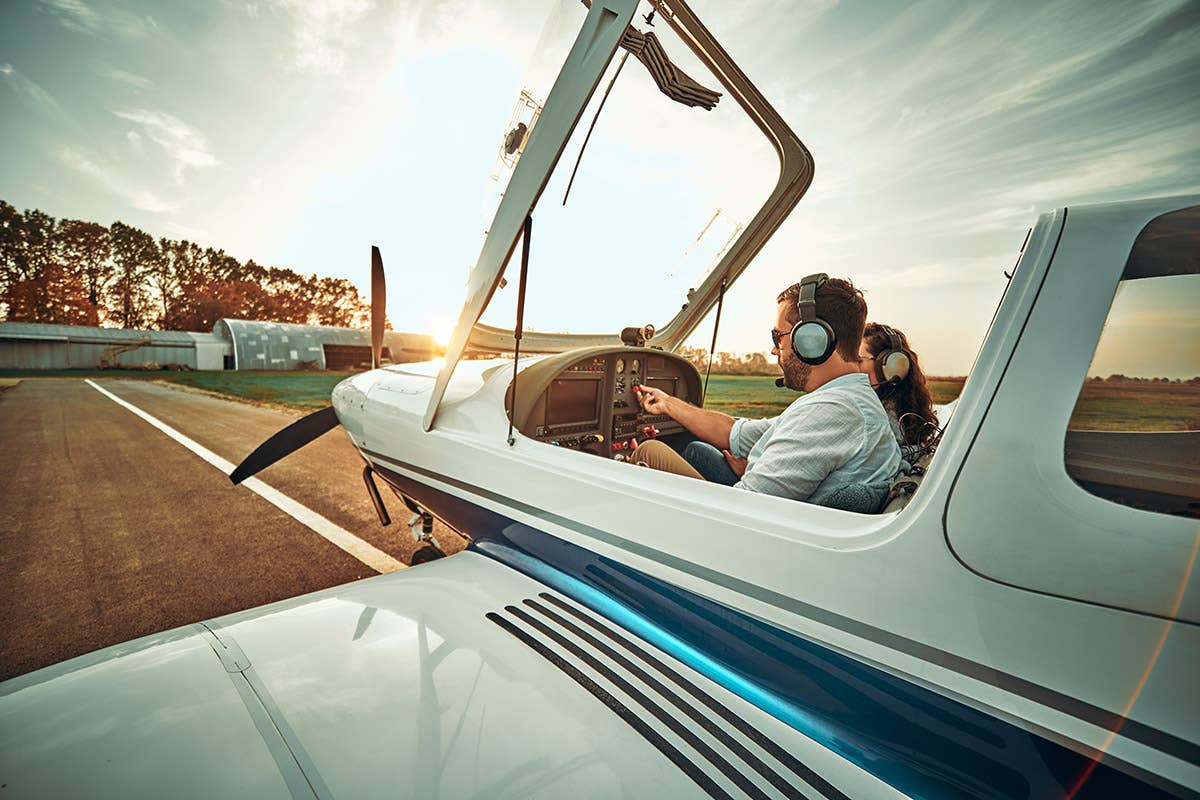
Subscribe to Our Newsletter
Get the latest FLYING stories delivered directly to your inbox

